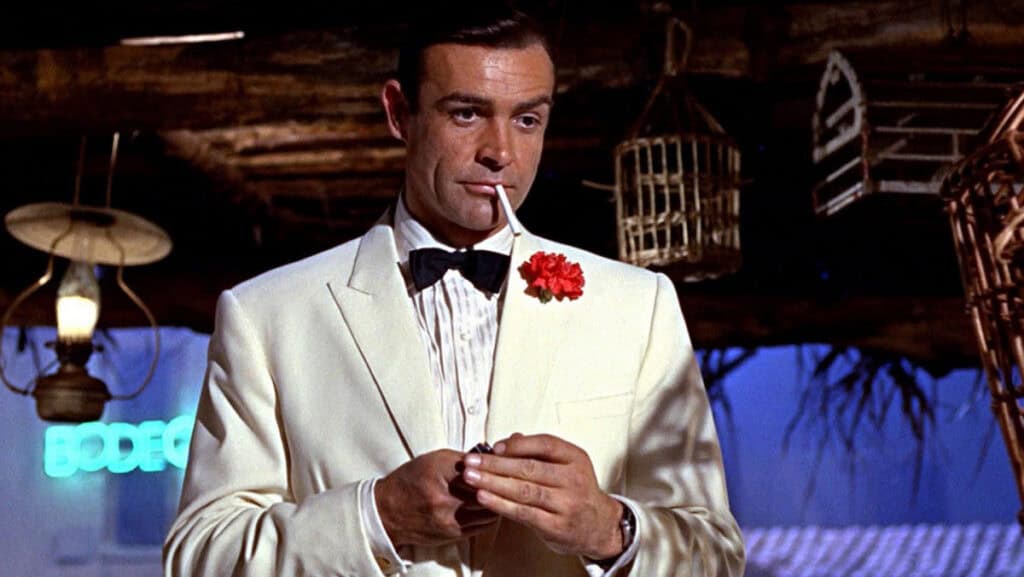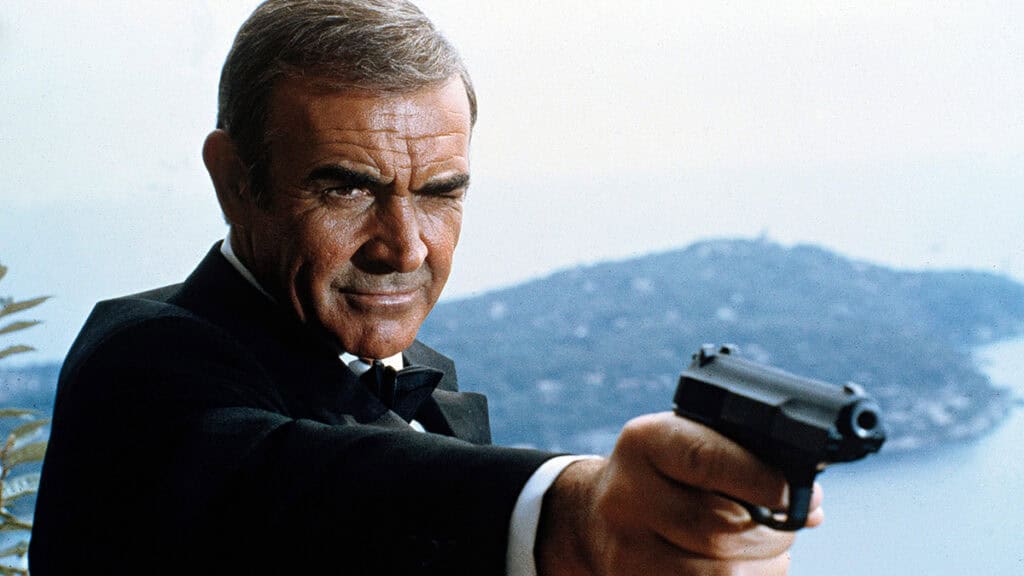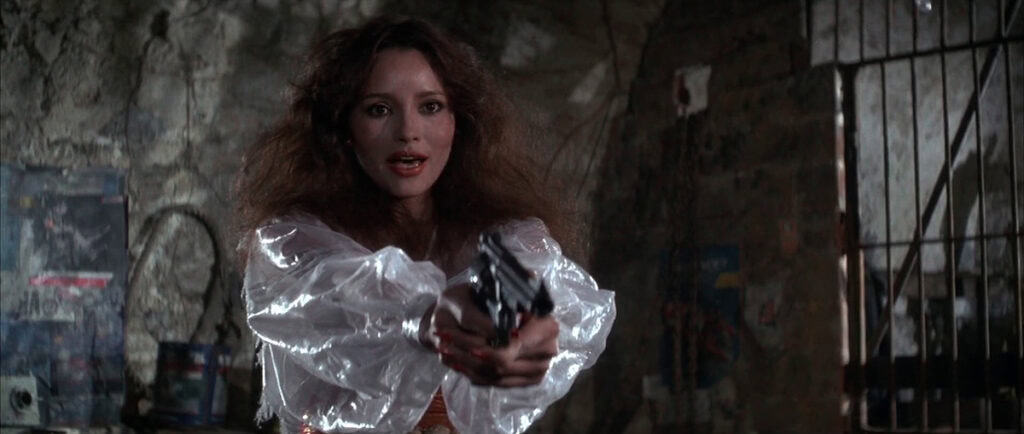
James Bond: a franchise known for its complex web of deceit, high-stakes power struggles, and bitter rivalries. In a world where alliances are easily forged and broken, the players are always looking for an angle to gain the upper hand. A realm where secrets are currency and the truth is only revealed to those who hold power. A landscape marked by twists and turns, where loyalties are tested, and betrayals are commonplace.
And I’m not even talking about the seminal spy’s escapades! Behind the martini-sipping, globe-trotting, and high-octane action, an arguably more intriguing drama has unfolded for decades. Welcome to the battle over James Bond film intellectual rights, where real-life drama might be more thrilling than any fictional plot. Where producers and studios engage in a game of cat and mouse, and the prize is control over the most iconic spy franchise in history.
One of the most fascinating chapters in this saga is the story of Warhead, a James Bond film that almost was, then wasn’t, then kinda was, then almost was again a couple of times, then never was. Developed in the 1970s by Kevin McClory, Len Deighton, and the O.G. Bond Sean Connery, Warhead was meant to be a grittier take on the Bond franchise, with some truly crazy elements thrown in for good measure. It became a casualty of war between conflicting creative forces, leaving us to wonder what could have been and just how and why this movie went unmade.

Our story actually dates back to 1958, when James Bond novel author Ian Fleming met filmmaker Kevin McClory and christened him the man to bring the character to the screen. Rather than adapting an existing novel, they recruited playwright Jack Whittingham and penned the script eventually named Thunderball. Richard Burton, who would go on to act in a different British Spy novel adaptation, was considered to play the lead, and the Master of Suspense himself, Alfred Hitchcock, was considered to direct. Rather than continue the pitch, Fleming absconded with the story and turned it into a novel. This upset McClory, who sued Fleming and won, maintaining screen rights.
Danjaq and Eon Productions, who’ve been behind nearly every Bond film production, were interested in adapting the Thunderball story as the first James Bond film, but the legal situation obviously complicated that. They’d instead go forward with Dr. No in 1962, From Russia with Love in 1963, and Goldfinger in 1964. The success of these films proved James Bond to be a valuable cinema property. They returned to the Thunderball story in 1965, and it became arguably the most successful Bond film of all time, grossing nearly $1.4 billion when adjusted for inflation. The story and film’s underwater elements were inspired by McClory’s own passion for scuba diving. McClory’s efforts were rewarded with a producer and writer credit. As part of the arrangement, McClory retained future film rights to the story but agreed not to produce another Thunderball film for 10 years following. Audiences would be over the whole Bond thing by then, anyway, right?
You can probably see where this is going. Audiences are, to this day, not over the whole Bond thing, and exactly 10 years later, in 1975, Kevin McClory began to work on his own Thunderball adaptation. It was initially titled James Bond of the Secret Service, and McClory brought on two new writers. One was Len Deighton, author of the spy novels centered on Harry Palmer, who Michael Caine portrayed on screen, starting with The Ipcress File in 1965. Deighton has since downplayed his contributions. The other was the first man to play James Bond on the silver screen, Thomas Sean Connery. Connery, though he had claimed to be done with his Bond involvement after 1971’s Diamonds are Forever, lent legitimacy to the McClory production that earned it backing from Paramount under the name Warhead.

The two versions of the Warhead script that have made it into the hands of the public, one from 1976 and the other from 1978, don’t exactly read as a movie that could have ever been made in 1975. The script suffers from a bit too much absurdity and ambition. It places the blame for the mysterious losses in the Bermuda Triangle on the shoulders of the villainous SPECTRE organization. Their massive underwater base hosts every abducted airplane and vessel. It’s dubbed “Aquapolis” (say that five times fast), and the entire city-sized base combs the ocean floor, mining for gold and minerals. At the helm is Bond’s ofttimes nemesis Ernst Blofeld, a role Orson Welles was tapped for, and who’s written as cartoonishly callous, killing four of his own men for minor infractions within the first act. His main heavy, which in this case is literal, was Bomba in early drafts and Genghis in the latest. There’s direction in the first script that compares his overwhelming physical dominance favorably to legendary boxer Muhammad Ali, though in terms that would get the writer canceled today.
Speaking of ambition, the villain Blofeld’s ambition is a world where water takes up even more of the global surface and the downfall of the world’s major financial institutions. SPECTRE steals three nukes: two to detonate underneath Antarctica to flood the world and one to use against the institutions responsible for the polluted state of the world. The third location is a mystery for Bond to solve before it’s too late. There’s a jab at Americans in the form of Q using the concentration of fecal matter collected by Aquapolis to narrow down the location to New York City.
NYC begins reporting rampant shark attacks, but these are no ordinary sharks. These are mechanical sharks escorting a mechanical hammerhead hosting the nuclear bomb aimed at Wall Street by way of the New York City tunnels. The jabs at Americans continue as the script repeatedly mentions how full the sewer path is with human waste. Blofeld looks on from his command center in the head of the Statue of Liberty. Connery himself climbed to the top to scout the location, which takes ascending 162 steep steps. In the script, Bond battles the sharks and is pursued by Bomba/Genghis, who falls victim to a particularly indiscriminate shark. What happens next could appear in the dictionary next to “Deus Ex Machina.” Bond latches onto the nuke-toting mechanical hammerhead and struggles until he happens to swim near Q, who can easily and instantly disable the bomb’s timer.
The heavy is dispatched, and the plan is foiled, but Blofeld is still at large atop the Statue of Liberty, which, in the script, has a tear of blood seeping from its eye. Bond skis over and then paraglides into the eye to pursue the villain. Blofeld rappels down the 300-foot/90-meter length of the statue into the Aquapolis. Bond chases and manages to end the SPECTRE boss once and for all—or at least for now.

Bond romances no less than three Bond girls throughout the course of the script. One introduces herself as “Justine Lovesit,” prompting Bond’s playful response, “Does she?”. Another SPECTRE agent, Fatima Blush, has a dalliance with Bond in a hot tub, during which she tells him, “I can read you like a book.” After she follows that up with some intimate touching, the spy responds with “This must be the Braille system you’re using.” They also get together on a hotel bed with another SPECTRE agent, this one posing as a hotel maid, underneath the bed the entire time, before the whole place explodes. After dispatching Blofeld and narrowly escaping as Aquapolis crashes into a cliff, Bond makes off and makes out with Domino, Blush’s identical twin, in Blofeld’s private submarine.
Bond adherents may notice the similarities to Eon’s 1977 The Spy Who Loved Me. There’s the large underwater installation operated by a madman bent on destroying society to save the environment. There’s the outsized henchman who combats a shark. There are the stolen nukes aimed at New York City. There’s the final escape aboard the private submarine. Even if you didn’t notice, Warhead producer Kevin McClory and Eon producer Cubby Broccoli certainly did, and they were locked in legal battles for over 5 years, with the originator of those shared elements being at issue. Eon alleged that McClory was straying too far from the Thunderball story, which he maintained the rights to. McClory alleged that Eon stole elements of his story to undermine his production. Regardless of who was right, the legal complications and the ballooning proposed budget were enough to scare Connery and Paramount away, and the Warfield project was effectively halted. At the same time, The Spy Who Loved Me moved forward by renaming their Blofeld character to Karl Stromberg.
A shell of Warhead would go on to become Never Say Never Again in 1983, which is more of a straight Thunderball remake. Producer Jack Schwartzman brought on his brother-in-law Francis Ford Coppola to help write and Irvin Kershner, fresh off the success of The Empire Strikes Back, to direct. Sean Connery was lured back to play the lead with promises of creative control and profit sharing, along with a $3 million run-of-the-picture deal, about $9.5 million, in 2024 money. Never Say Never Again competed almost directly with Eon’s Octopussy, released earlier that same year. Despite a troubled production, the McClory/Schwartzman/Connery vehicle actually had a better opening weekend. It went on to gross nearly the same at the box office as the mainline entry.
Kevin McClory wasn’t yet done with attempts to bring Bond to the screen. He began developing a cartoon series titled James Bond vs. S.P.E.C.T.R.E., but Eon beat him to the punch, perhaps intentionally, with the non-canonical James Bond, Jr. in 1991. He renamed his Warhead script “Warhead 8”, then “Warhead 2000”, and moved Orson Welles to the director’s chair. McClory got support from Sony Pictures and pitched with Liam Neeson and Timothy Dalton to play the lead. Sony funded a lawsuit against MGM in pursuit of royalties owed to McClory for EVERY prior Bond film, alleging he was the originator of the character on the screen. The lawsuit was unsuccessful. The movie was effectively dead after Sony traded Bond to MGM for Spider-Man in 1995 before buying MGM outright in 2005. MGM bought the rights to Never Say Never Again in 1997. Kevin McClory passed away in 2006, and with him passed the potential of a rival Bond film. His heirs settled with Eon in 2013 over the film rights to the Thunderball story, the SPECTRE organization, and the Blofeld character, opening the door to their inclusion in 2015’s Spectre.
The story of the unmade Bond film Warhead serves as a reminder of the high stakes and bitter rivalries that shape the film industry, especially the Bond franchise. Despite the best efforts of Kevin McClory, his vision for a grittier, more ambitious Bond film was ultimately thwarted by legal battles and creative differences. The legacy of the unmade script persists in the form of elements that formed uncanny coincidences with its contemporary, The Spy Who Loved Me, and the foundations of Never Say Never Again. With rumors swirling about who will take up the Bond mantle after Daniel Craig, we’re left to wonder what could have been and what’s still to come.
The post Warhead 007: The James Bond Film That Never Was appeared first on JoBlo.
Leave a Reply